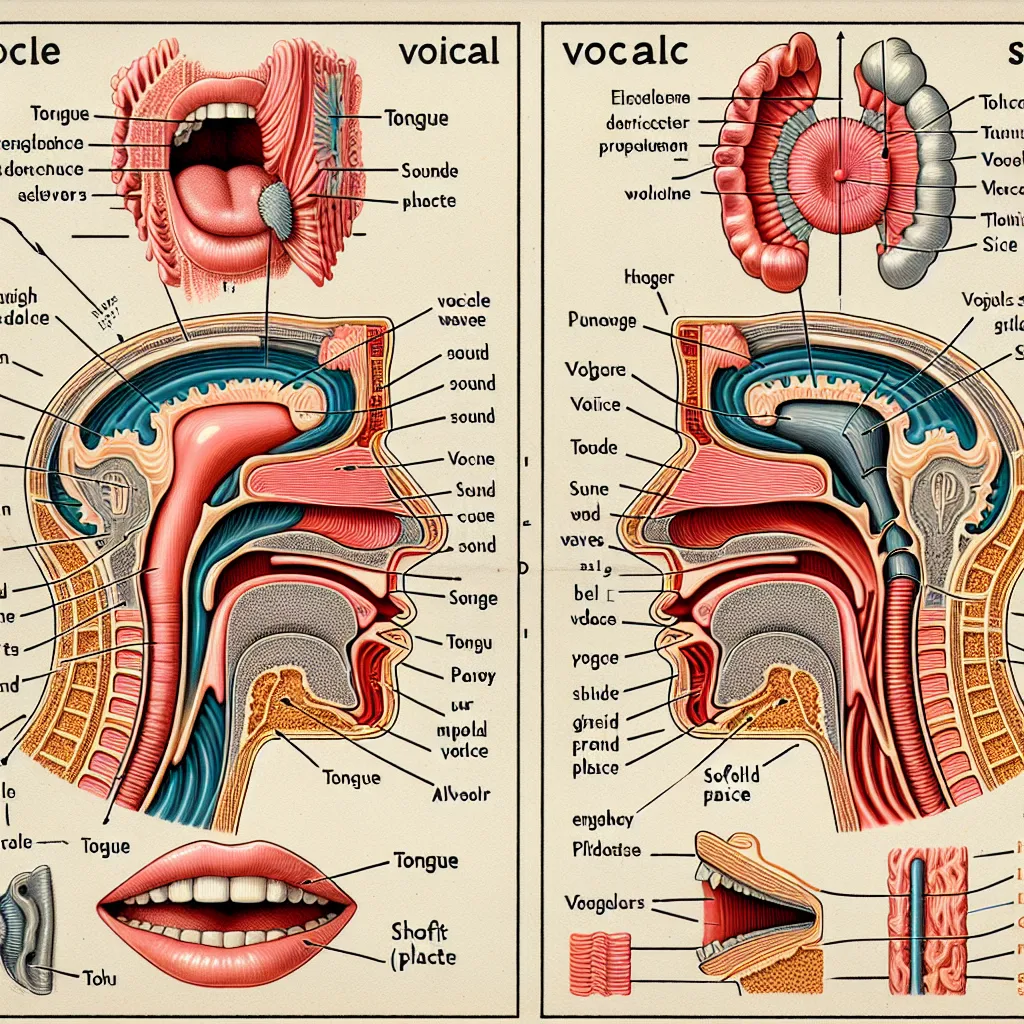Learning to pronounce English words correctly is crucial for effective communication. One of the key aspects of English pronunciation is understanding the difference between voiced and voiceless sounds. This guide will help you master these sounds and improve your overall pronunciation skills.
Understanding Voiced and Voiceless Sounds
Voiced and voiceless sounds are fundamental concepts in English phonetics. They refer to whether or not your vocal cords vibrate when producing a sound.
Voiced Sounds
Voiced sounds occur when your vocal cords vibrate as you make the sound. To feel this vibration, place your hand on your throat and say “zzz” or “vvv”. You’ll feel a buzzing sensation.
Examples of voiced consonants:
- B, D, G, J, L, M, N, R, V, W, Y, Z
Voiceless Sounds
Voiceless sounds are produced without vocal cord vibration. Try saying “sss” or “fff” with your hand on your throat. You won’t feel any vibration.
Examples of voiceless consonants:
- F, K, P, S, T, SH, CH, TH (as in “think”)
 Voiced and Voiceless Sounds Diagram
Voiced and Voiceless Sounds Diagram
Techniques for Mastering Voiced and Voiceless Sounds
-
Practice Minimal Pairs: Use word pairs that differ only in their voiced or voiceless consonant, such as:
- Van/Fan
- Zip/Sip
- Bed/Pet
-
Use a Mirror: Watch your mouth and lip movements as you practice these sounds.
-
Record Yourself: Compare your pronunciation with native speakers.
-
Focus on Aspiration: Pay attention to the puff of air in voiceless sounds like “p”, “t”, and “k”.
-
Utilize Online Resources: Websites like LearnEnglish.net offer excellent pronunciation guides and exercises.
Common Pronunciation Errors
-
Confusing “V” and “W”: Many non-native speakers struggle with this distinction. Practice words like “very” and “worry”.
-
Th-fronting: Replacing “th” with “f” or “v”. For example, saying “fink” instead of “think”.
-
Final Devoicing: Pronouncing voiced consonants as voiceless at the end of words. For instance, saying “dog” with a “k” sound at the end.
-
Over-aspiration: Putting too much emphasis on the aspiration of voiceless stops (p, t, k) in all positions.
-
Ignoring Voiced “S”: Failing to voice the “s” in words like “dogs” or “plays”.
Phonemic Chart and Commonly Mispronounced Words
Understanding the International Phonetic Alphabet (IPA) can greatly aid in mastering voiced and voiceless sounds. Here’s a simplified phonemic chart focusing on consonants:
| Voiceless | Voiced |
|---|---|
| p | b |
| t | d |
| k | g |
| f | v |
| θ (th in “think”) | ð (th in “this”) |
| s | z |
| ʃ (sh) | ʒ (measure) |
| tʃ (ch) | dʒ (j) |
Here are 10 commonly mispronounced words related to voiced and voiceless sounds:
- Clothes (/kləʊðz/, not /kləʊz/)
- Sixth (/sɪksθ/, not /sɪks/)
- Buzz (/bʌz/, not /bʌs/)
- Breathe (/briːð/, not /briːθ/)
- Assume (/əˈsjuːm/, not /əˈʃuːm/)
- Garage (/ˈɡærɑːʒ/ or /ˈɡærɪdʒ/, not /ˈɡærɪdʒ/)
- Measure (/ˈmeʒər/, not /ˈmeʃər/)
- Zeal (/ziːl/, not /siːl/)
- Vase (/vɑːz/ or /veɪs/, not /feɪs/)
- Judge (/dʒʌdʒ/, not /ʒʌʒ/)
 English Phonemic Chart
English Phonemic Chart
Practical Exercises for Improvement
-
Tongue Twisters: Use phrases like “Peter Piper picked a peck of pickled peppers” to practice voiceless sounds, and “The buzzing bee buzzed by the bear” for voiced sounds.
-
Reading Aloud: Choose texts with a mix of voiced and voiceless sounds and practice reading them aloud, focusing on correct pronunciation.
-
Listening and Repeating: Use resources like LearnEnglish.net’s pronunciation guides to listen to native speakers and repeat after them.
-
Voiced/Voiceless Sound Sorting: Create two columns (voiced and voiceless) and sort words into these categories based on their sounds.
-
Partner Practice: Work with a language exchange partner to practice and receive feedback. You can find partners through language practice platforms.
Conclusion
Mastering the distinction between voiced and voiceless sounds is a crucial step in improving your English pronunciation. By understanding these concepts and practicing regularly, you can significantly enhance your speaking skills and overall communication in English. Remember, consistent practice and patience are key to success in language learning. Don’t hesitate to use resources like pronunciation apps, online tutorials, and language exchange partners to support your learning journey.
For more tips on perfecting your English pronunciation, especially if you’re aiming for a British accent, check out our guide on pronunciation tips for British English. Keep practicing, and you’ll soon notice a remarkable improvement in your English pronunciation!




